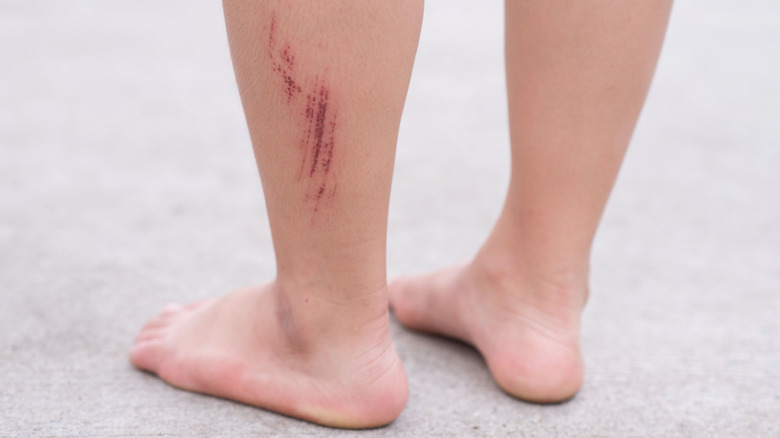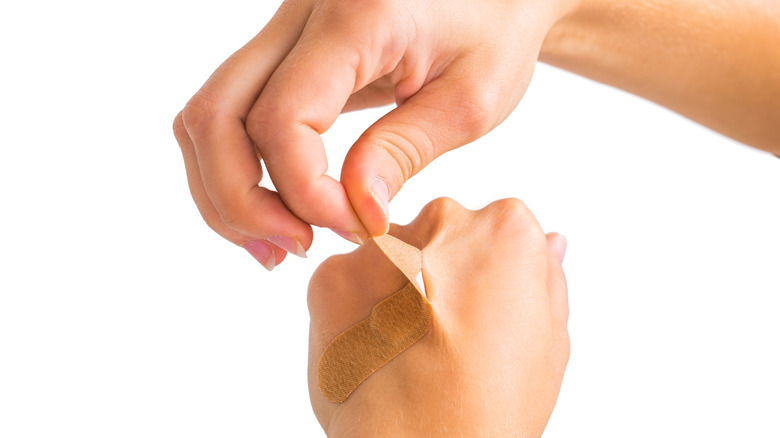Why It's Riskier Than You Think To Leave A Cut Uncovered
Cuts and scrapes are a part of life, and sometimes they seem so minor that we choose to skip the bandage. Most of the time, leaving a cut uncovered does not lead to any serious problems, but doing so is riskier than you might think.
You may have heard that going without a bandage and letting a wound air out is good, but cuts and scrapes actually need moisture to heal properly. Experts state that a moist environment keeps cells alive and encourages new cell growth (via University of Pittsburgh Medical Center). There are many additional good reasons to sport a bandage too, as they offer protection from germs and dirt and shield the cut from additional bumps, scrapes, or injury (via Cleveland Clinic).
Before covering the wound, you'll want to clean it out with water. Alcohol, hydrogen peroxide, and iodine are not necessary, as they may irritate it. Spread a thin layer of antibiotic ointment over the cut before applying a bandage. Change the bandage daily or when it starts to get dirty (via WebMD).
When it's safe to remove a bandage
There comes a time, however, when it is safe to remove the bandage. When you start to see a scab forming, you may opt to go without covering. This is especially true if the cut is small. Of course, if the wound is large or in a place where the scab could reopen, like the elbow or knee, it might be safer to continue to keep it covered (via WebMD).
How long it takes for a wound to heal depends on how big it is. Minor scrapes tend to heal within a few days, while a deep cut may take longer. As you change your bandage, pay attention to any signs of infection. If the scab does not appear to have healed within ten days, or it appears to be getting worse after 48 hours, you may want to schedule an appointment with your health care practitioner to have the wound further examined. Other signs that indicate you may need to visit a physician include fever, redness, or swelling that appears to be spreading (via Healthline).


